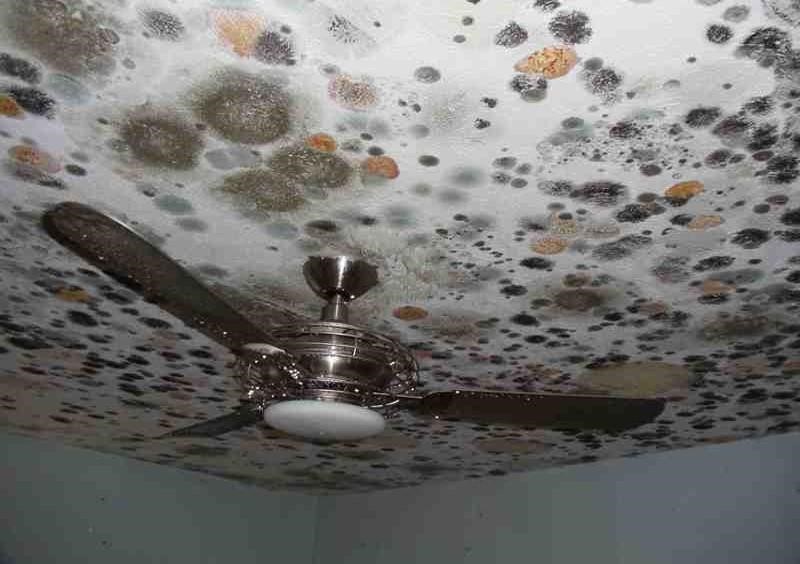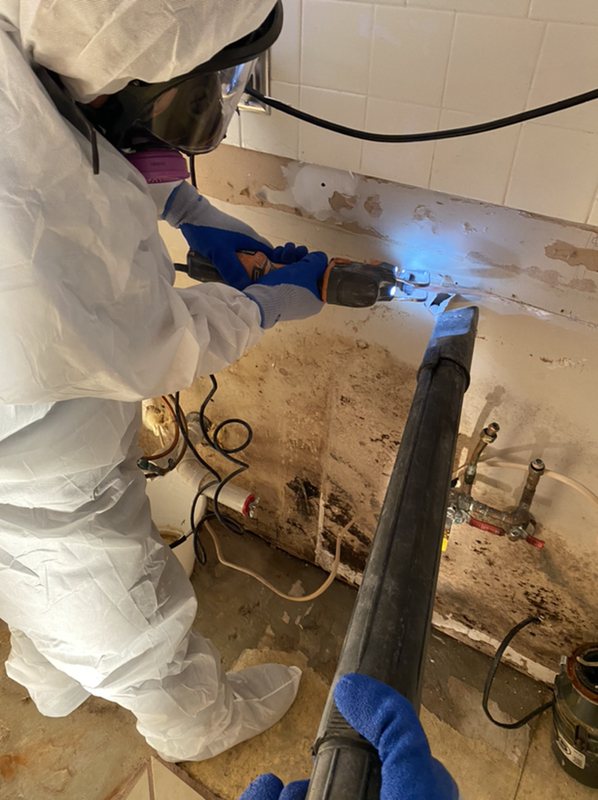Mold & INDOOR AIR Sampling
What is Mold?
Mold is a type of fungi found both in and out of doors. There are estimated to be over 100,000 different species of mold. Molds are a naturally occurring part of the environment. In many cases the presence of mold does not cause adverse reactions, however mold has the potential to cause a wide variety of human illness, including infections, allergies, triggering asthma, and toxic effects. The primary source of indoor mold problems is excess moisture (as water or vapor) infiltration.
Sometimes it is very clear that mold is present due to the classic signs of mold growth as shown in this picture. However, in other cases it can be more difficult or even impossible to tell by visual inspection alone.
Here are some tips about when to sample:
- You want to identify the type of mold present in your building.
- You smell something but there are no signs of visible mold.
- You may have asthma or allergies or are particularly sensitive to the presence of mold and are having symptoms such as difficulty breathing or irritation.
- You have sustained a water intrusion and want to confirm the area is dry and there is no mold present.

Mold sampling & Surveys
Mold Surveys
Surveys can include visual and olfactory observations, assessment of building materials via protimeter (moisture meter) and infrared (IR) camera, assessment of hidden areas via borescope, collection of direct examination samples to identify potential surficial mold growth and collection of air samples to identify potential airborne mold spores.
Mold Sampling
Samples are collected at the site (direct examination and/or air sampling) and sent to a certified laboratory for analysis. Direct examination (surface sampling) is utilized to identify surficial mold growth. Air sampling is utilized to identify various airborne particles, including mold spores. Depending on the sampling method, laboratory analysis can provide results for spore viability (living or not living) and identification of specific spore genus and species.
Surface Sampling
- Tape lift sampling – Samples of suspect mold growth collected via specialized tape.
- Swab sampling – Samples of suspect mold growth are collected via sterile swab.
- Bulk sampling – Samples of actual building materials with suspect mold growth are removed and collected.
Air Sampling
- Total spore count – Samples are collected via specialized vacuum pump and sampling cassette.
- Culturable air sampling – Samples are collected via specialized vacuum pump and growth media (e.g. Petri dish). Samples are then incubated for several days in the laboratory.
Mold Remediation
When mold growth is identified, remediation work should be conducted by an experienced mold remediation contractor.
Mold Remediation
When mold growth is identified, remediation work should be conducted by an experienced mold remediation contractor.

What to look for during a mold remediation?
When performing selective demolition for mold remediation:
- Work areas should be placed in containment and kept under negative pressure via air scrubbers equipped with HEPA filters.
- Mold and water-impacted building materials should be removed.
- Building materials that cannot be removed, such as structural components, should be remediated in-place via application of antimicrobial cleaners, inhibitors, and sealants, surface removal or other methods.
- Remediation waste should be bagged within containment and removed from the work area for proper disposal
More information about mold from the CDC and EPA
https://www.epa.gov/mold/what-difference-between-mold-and-mildew
https://www.epa.gov/indoor-air-quality-iaq
The Key To Mold Control Is Moisture Control -US EPA https://www.epa.gov/mold


